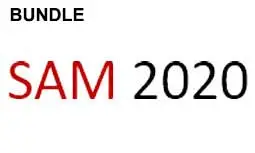Two-timescale Beamforming Optimization for Intelligent Reflecting Surface Enhanced Wireless Network
Ming-Min Zhao, Qingqing Wu, Minjian Zhao, Rui Zhang
-
Members: FreeSPS
IEEE Members: $11.00
Non-members: $15.00Length: 09:53
10 Jun 2020
Intelligent reflecting surface (IRS) has drawn a lot of attention recently as a promising new solution to achieve high spectral and energy efficiency for future wireless networks. Prior works on IRS mainly rely on the instantaneous channel state information (I-CSI), which, however, is practically difficult to obtain for IRS-associated links due to its passive operation and large number of elements. To overcome this difficulty, we propose in this paper a new two-timescale (TTS) transmission protocol to maximize the achievable average sum-rate for an IRS-aided multiuser system. Specifically, the passive IRS phase-shifts are first optimized based on the statistical CSI (S-CSI) of all links, which varies much slowly as compared to their I-CSI, while the transmit beamforming/precoding vectors at the access point (AP) are then designed to cater to the I-CSI of the users' effective channels with the optimized IRS phase-shifts, thus significantly reducing the channel training overhead and passive beamforming complexity over the existing schemes based on the I-CSI of all channels. Simulation results are presented to validate the effectiveness of our proposed algorithm.



